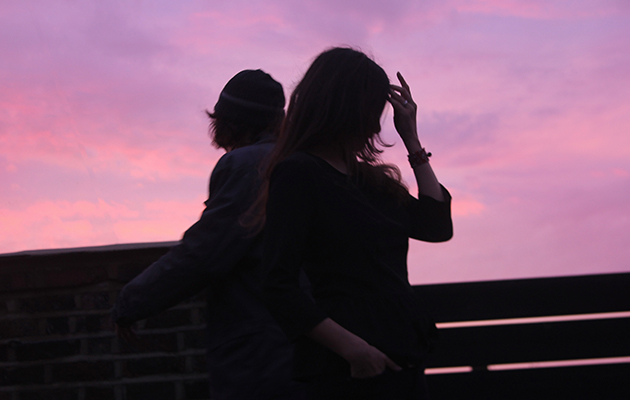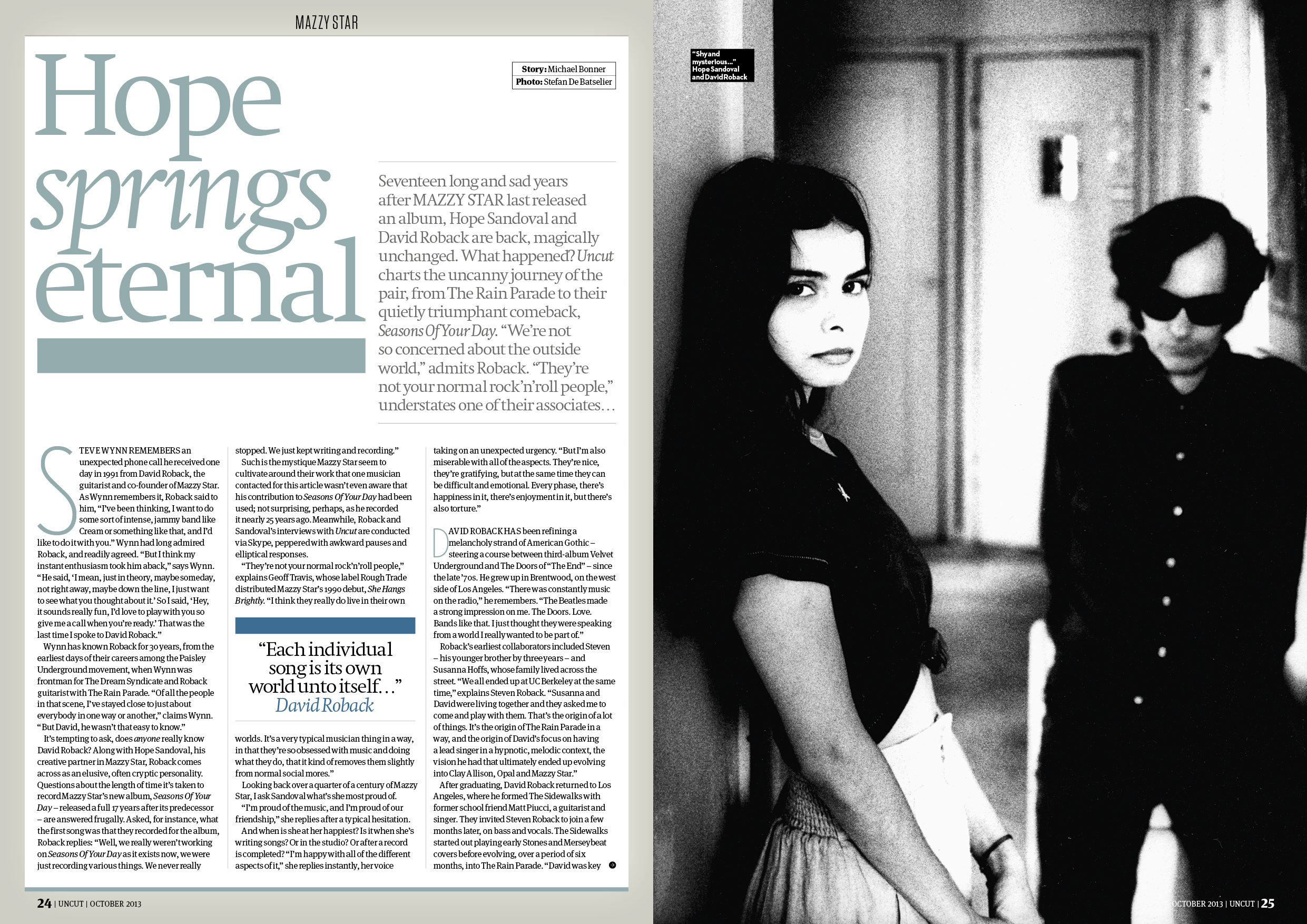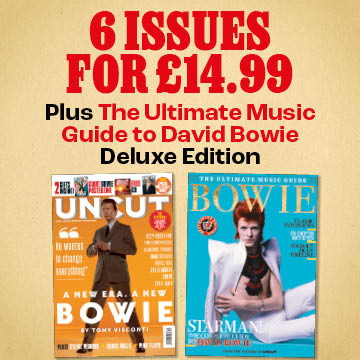Very sad news overnight about the passing of David Roback. By way of a tribute, here’s my career-spanning Mazzy Star interview which originally appeared in Uncut’s October 2013 issue, around their then-new album, Seasons Of The Day.
Follow me on Twitter @MichaelBonner
———-
Hope Springs Eternal
Seventeen long and sad years after Mazzy Star last released an album, Hope Sandoval and Dave Roback are back, magnificent and unchanged. What happened? Uncut charts the uncanny journey of the pair, from The Rain Parade to the quietly triumphant comeback, Seasons Of Your Day. “We’re not so concerned about the outside world,” admits Roback. “They’re not your normal rock’n’roll people,” understates one of their associates…
Steve Wynn remembers an unexpected phone call he received one day in 1991, from David Roback, the guitarist and co-founder of Mazzy Star. As Wynn remembers it, Roback said to him, “I’ve been thinking, I want to do some sort intense, jammy band like Cream or something like that, and I’d like to do it with you.” Wynn had long admired Roback, and readily agreed. “But I think my instant enthusiasm took him aback,” says Wynn. “He said, ‘I mean, just in theory, maybe some day, not right away, maybe down the line, I just want to see what you thought about.’ So I said, ‘Hey, it sounds really fun, I’d love to play with you so give me a call when you’re ready.’ That was the last time I spoke to David Roback.”
Wynn has known Roback for 30 years, from the earliest days of their careers among the Paisley Underground movement, when Wynn was frontman for the Dream Syndicate and Roback the co-singer and guitarist with the Rain Parade. “Of all the people in that scene, I’ve stayed close to just about everybody in one way or another over the years,” claims Wynn. “But David, he wasn’t that easy to know.”

It’s tempting to ask, does anyone really know David Roback? Along with Hope Sandoval, his creative partner in Mazzy Star, Roback comes across as elusive, often cryptic. Questions about the length of time it’s taken to record Mazzy Star’s new album Seasons Of Your Day – released a full 17 years after its predecessor – aren’t answered as fully as you’d like. Asked, for instance, what the first song was that they recorded for the album, Roback replies: “Well, we really weren’t working on Seasons Of Your Day as it exists now, we were just recording various things. We never really stopped. We just kept writing and recording.”
Such is the degree of mystery Mazzy Star seem to cultivate around their work that one musician contacted for this article wasn’t even aware that his contribution to Seasons Of Your Day had been used; not surprising, perhaps, as he recorded it nearly 25 years ago. Meanwhile, Roback and Sandoval’s interviews with Uncut are conducted via Skype, peppered with awkward pauses and elliptical responses.
“They’re not your normal rock ‘n roll people,” explains Geoff Travis, whose label Rough Trade distributed Mazzy Star’s 1990 debut, She Hangs Brightly. “I think they really do live in their own worlds. It’s a very typical musician thing in a way, in that they’re so obsessed with music and doing what they do, that it kind of removes them slightly from normal social mores.”
Looking back over a quarter of a century of Mazzy Star, I ask Sandoval what’s she most proud of.
“I’m proud of the music, and I’m proud of our friendship,” she replies after a typical hesitation. And when is she at her happiest? Is it when she’s writing songs? Or in the studio? Or after a record is completed? “I’m happy with all of the different aspects of it,” she replies instantly, her voice taking on an unexpected urgency. “But I’m also miserable with all of the aspects. They’re nice, they’re gratifying, but at the same time they can be difficult and emotional. Every phase, there’s happiness in it, there’s enjoyment in it, but there’s also torture.”
David Roback has been refining a melancholy strand of American Gothic – steering a course between third-album Velvet Underground and The Doors of “The End – since the late Seventies. He grew up in Brentwood, on the west side of Los Angeles. “There was constantly music on the radio,” he remembers. “The Beatles made a strong impression on me. The Doors. Love. Bands like that. I just thought they were speaking from a world I really wanted to be part of.”
Roback’s earliest collaborators included Steven – his younger brother by three years – and Susanna Hoffs, whose family lived across the street. “We all ended up at UC Berkeley at the same time,” explains Steven Roback. “Susanna and David were living together and they asked me to come and play with them. That’s the origin of a lot of things. It’s the origin of the Rain Parade in a way, and the origin of David’s focus on having a lead singer in a hypnotic, melodic context, the vision he had that ultimately ended up evolving into Clay Allison, Opal and Mazzy Star.”
After graduating, David Roback returned to Los Angeles, where he formed the Sidewalks with former school friend Matt Pucci, a guitarist and singer. They invited Steven Roback to join a few months later, on bass and vocals. The Sidewalks started out playing early Stones and Merseybeat covers before evolving, over a period of around six months, into the Rain Parade. “David was key in setting out the vision for the band,” admits his brother. “We all loved vintage instruments, the sounds of Richenbackers and Gretschs. We knew that they all sounded cool on their own and in context, and we put all those instruments together to see what we could get.”
“I think that there was some interesting music going on then, a lot of guitar interaction and electric organ,” says David Roback. “We were just experimenting with sounds and I was writing a lot of songs back then, singing with that band.”
The Rain Parade found themselves sharing both concert bills and artistic sensibilities (psychedelia, Nuggets, Big Star, the Velvet Underground) with a loose collection of bands on the fringes of the Los Angeles club scene during the early Eighties. “The Rain Parade were as Paisley as the Paisley Underground got,” remembers the Dream Syndicate’s Steve Wynn. “Of all the bands on the scene – the Dream Syndicate, the Salvation Army, Green On Red, even the Bangs who became the Bangles – all of us were coming from a more punk rock background. But the Rain Parade weren’t like that. They were happy just to be floating and gentle and trippy. Pink Floyd and the Byrds. Who didn’t love that?”

Roback stayed with the Rain Parade precisely long enough to record a single – 1982’s “What She’s Done To Your Mind?” – and an album, Emergency Third Rail Power Trip, the following year. Even before recording the album, Roback had already set in motion another musical project – Clay Allison, formed with his girlfriend and former Dream Syndicate vocalist, Kendra Smith.
“I remember the first Rain Parade tour, when we were in New York City, playing CBGBs with Green On Red,” pinpoints Steven Roback. “We had a couple of days off, and David did the first Clay Allison gig with Kendra at the Pyramid Club. It was David and Kendra, kind of acoustic, and Will [Glenn, Rain Parade’s keyboard player] was playing violin and I was playing piano.”
Clay Allison established the template for Roback’s subsequent work – a kind of dreamy psych-folk. After two EPs, Clay Allison quietly morphed into Opal, who recorded two EPs, Fell From The Sun and Northern Line, and an album, 1987’s Happy Nightmare Baby.
“Happy Nightmare Baby was a very electric record,” explains David Roback. “We were very orientated towards playing live at that point. What we’d been doing before that was very acoustic, and then we thought we’d make it very electric, so we went from being somewhat acoustic to very electric, like Happy Nightmare Baby.”
One admirer of both Roback and Smith’s work was a young music fan, Hope Sandoval, who Steve Wynn remembers “used to come to Dream Syndicate soundchecks, in like ’82, when I think she was like 14 or 15. Her mum would bring her. She couldn’t come to our shows because she was too young. We talked to her and she seemed nice, but I got the feeling that she was particularly mesmerised by Kendra. The beginning of the All About Eve saga!”
“I’ve always loved music,” begins Hope Sandoval. “I grew up with older brothers and sisters who were into music, played The Beatles and the Rolling Stones and Aretha Franklin. I grew up in an area of East LA… I think it’s called Maravilla area. It’s Spanish. I had a project called Going Home with my good friend Sylvia Gomez, and when we met David and Kendra they knew that we had this little music thing we were doing, and they were interested in it. David asked us if we’d like to go into the studio and make a record. I thought David was shy. Yeah, and sort of mysterious. What do I think connected us? We liked each other’s music. That’s really what it was. We didn’t really communicate a lot other than just enjoying each other’s music. I was asked to do some live shows [with Opal] because Kendra didn’t want to be the front person, and I think it just got really difficult for her. It was during a tour that they were doing with the Jesus And Mary Chain, so I got a call from David asking me if I would fly out to New York and finish the tour. That’s what it was. That’s how I started working with his band.”If the creative union of Roback and Sandoval was borne out of pragmatic necessity – to finish the Jesus And Mary Chain tour – it began to take on a more solid shape in early 1988.
“I’d gone into the studio with David’s band, Opal,” explains Sandoval. “I wasn’t writing, I was just singing the songs that he had written and it wasn’t really working out for me. I don’t think for him, either. And I suggested that maybe we write together.”
“We were performing a lot of Opal material and one day we just thought, let’s just start something completely new and different, and that was Mazzy Star,” continues Roback. “We started to write a lot of songs together, that’s really what got us – we really got into that.”
“I asked David to send me some of his guitar ideas,” says Sandoval. “He sent me maybe five or seven beautiful rhythm guitar ideas. Did I have lyrics for them? No, I didn’t. Usually what I do is I write my vocal melody over guitar parts and then I come up with lyrics.”
The songs became Mazzy Star’s debut album, 1990’s She Hangs Brightly.
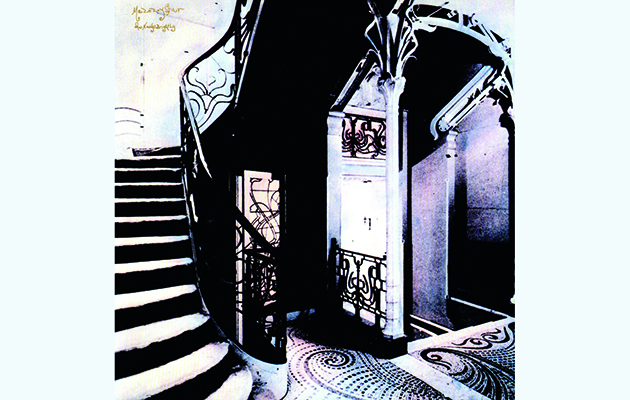
“The majority of that record was recorded in San Francisco at a place called Hyd Street Studios,” reveals Roback. “We were recording up there and a little bit in Los Angeles as well, we were back and forth between the two cities, between Berkeley and Los Angeles. We really were just experimenting with different pieces of recording, as we still do mostly. Live music in the studio.”
The album was released by Rough Trade – who had previously handled the UK distribution for Happy Nightmare Baby.
“I remember the first time I met them in person,” says Geoff Travis. “In Los Angeles at the Roosevelt Hotel. It’s got a remarkably lifelike statue of Charlie Chaplin in the entrance, and a pool designed by David Hockney. I met David and Hope together, they were sitting beside the side of the pool. Hope was very quiet. Probably slightly more in thrall to David at that point, than later when she exerted her own individuality. She’s a really good soul, Hope. She’s very queenly, in a way. I think of her as the Queen of East LA: softly spoken, but definite and intelligent and bright, lovely. David is a bit more of an elder statesman when it comes to music, but with immaculate musical taste. Again, he’s quite quiet, speaks quite quietly, but very much alive, great sense of humour. But quite an odd individual, really, David.”
For all its strengths, She Hangs Brightly is best summed up by its opening track, the quietly enfolding “Haleh”: a definitive Mazzy Star composition characterised by gently rolling rhythms, guitar reverb and Sandoval’s husky vocals. The album had been on sale for a year when Rough Trade went into receivership.
“We sat down with David and Hope and we made a deal with Capitol to move them from Rough Trade to Capitol to help avoid the bankruptcy,” explains Travis.
To support the album, Mazzy Star toured America in 1990 supporting the Cocteau Twins. “They were quite different,” remembers former Cocteaus bassist, Simon Raymonde. “David was quite serious, quite thoughtful, didn’t say an awful lot. I quite liked him. Hope was super shy. There was often a bit of tension between them. Sometimes she’d just storm of stage. I didn’t get the impression that she particularly enjoyed the live thing. It was never dull, that’s for sure.”
The period following She Hangs Brightly was one of transition for Mazzy Star. In 1993, they added to their line-up Jill Emery, former bassist with Hole, who remained with them until 1996. “I went to their rehearsal studio,” she says. “Everyone was so reserved. It was quite a shock, coming from Hole, with an aggressive Courtney Love. Strangely, their quietness matched Hole’s abrasiveness, just on a different level.”
1993 also saw the band settle in London around the time they released their second album, So Tonight That I Might See. Continuing the soft-focus, slow motion jams of its predecessor, the album featuring the band’s only hit single – a dusty, lilting ballad, “Fade Into You”.
“To their credit, Capitol worked ‘Fade Into You’ for about nine months in radio, which I’ve very rarely seen in America,” says Geoff Travis. “They sold a million copies of So Tonight That I Might See, which when you think about it today seems an extraordinary number.”
If it can be considered a barometer of the song’s success in the mainstream, “Fade Into You” has appeared in no less than five separate episodes of the CSI franchises. There are countless other appearances in films and TV shows – most recently, it’s been covered by J Mascis – but perhaps the song’s most incongruous appearance is in Paul Verhoven’s sci-fi shoot-em-up, Starship Troopers.
“It’s not our film, you know,” says Roback with a dry laugh. “Incredibly violent. Quite a contradiction in a way. But it was interesting. People play your music in a bar. It’s not uncommon to hear your music in any context, or anybody’s music for that matter you could be walking down the street or you could, you know, be at a funeral, and somebody’s driving by playing the Beach Boys.”
Characteristically, the question of how they’d follow-up a hit single and million-selling album never particularly seemed to concern Roback or Sandoval.
“We’re not so concerned about the outside world,” explains Roback. “It’s a very internal process that we’re involved in. The outside world is really not on our minds, in so far as the music is concerned. We’re really doing it in our own world for ourselves. We’re engaged in the stories of each individual song. It is its own world unto itself.”

“I was always working with David,” says Hope Sandoval, as she looks back on the years between Mazzy Star’s third album, Among My Swan, and Seasons Of Your Day. “I think we thought maybe we’d release something, but we weren’t really so preoccupied with it. We were working on other things.”
Certainly, Sandoval has kept the highest profile since Among My Swan, contributing vocals to songs by the Jesus And Mary Chain, the Chemical Brothers, Death In Vegas, Massive Attack and Bert Jansch, and running a successful second band – Hope Sandoval And The Warm Inventions, with My Bloody Valentine drummer, Colm Ó Cíosóig. “I’m lucky, I’m very, very lucky,” she says. “I work with some of the most amazing artists.”
Roback, meanwhile, produced tracks for Beth Orton in the late Nineties and relocated to Norway, where he became involved with Norwegian artists and musicians including Mari Boine, Helga Sten and Guri Dahl, making experimental music for films and installations. He also acted – as himself – in Olivier Assayas’ film, Clean, for which he wrote four songs sung in the film by actress Maggie Cheung. Meanwhile, he and Sandoval continued working on Mazzy Star material. “She would come to Norway, or we would work in London, or we’d work in California,” he explains. “We really weren’t working on Seasons Of Your Day as it exists now, we were just recording various things.”
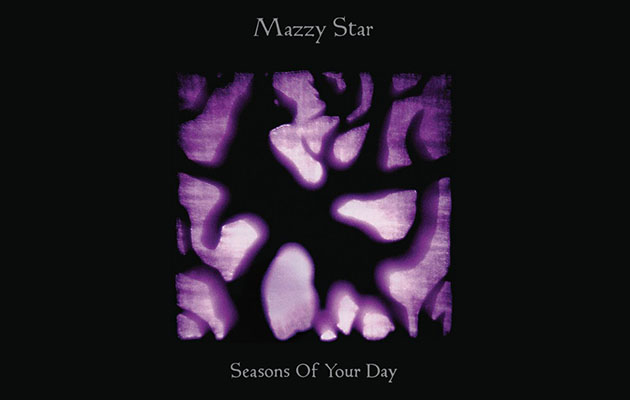
Sandoval is quick to echo Roback: “We didn’t record songs for Seasons Of Your Day, we titled the collection of songs after one of the songs.”
“In the studio, I’m usually playing guitar or keyboards,” continues Roback. “We like to get a live version we like. That’s what really appeals to us. Someone asked me recently if we were perfectionists, and I think perfection in music is really a dull thing, the imperfections of music are what give it character. Live, things happen in the moment.”
Among the musicians credited on Seasons Of Your Day are longstanding collaborators drummer Keith Mitchell and keyboard player Suki Ewers – both Opal veterans – and the band’s old friend, Bert Jansch. Reinforcing how long Roback and Sandoval have been working on these songs, Rain Parade keyboard player Will Glenn is also credited on the album: he died in 2001. Steven McCarthy believes his credit on the album stems from a session he played with the band in the early Nineties. “They asked me to bring my steel guitar down,” he remembers. “So for maybe an afternoon, I did some demos. David gave me a cassette tape with that and then said, ‘Will you come and do some more recording with us later, we’re going into a real studio.’ I went and the only thing I can remember him saying to me was, ‘Can you do it like you did on the demo.’ I do recall David seeming like he didn’t know who I was, which was kind of confusing to me because we had played quite a bit. I wasn’t quite sure what he was doing. It’s one of those things.”
Hope Sandoval, meanwhile, is already looking beyond Seasons Of Your Day. “We’re planning to start touring around November in the US and we’ll come out to Europe and do a few shows,” she explains. “I’m excited about it. I’m looking forward to getting together with everybody and playing some of the old songs, and having dinner and wine, catching up with everybody.”
And her aversion of singing live?
“It hasn’t changed. It’s difficult, but it’s there.”
And are there more unreleased songs?
“Oh, yeah. There’s loads of songs,” she confirms.
Will we ever hear them?
“I don’t know,” she says after a pause. “Probably. Once our families inherit everything after we’re dead and gone, I’m sure people will hear everything…”
Click here to listen to Uncut’s Paisley Underground playlist


